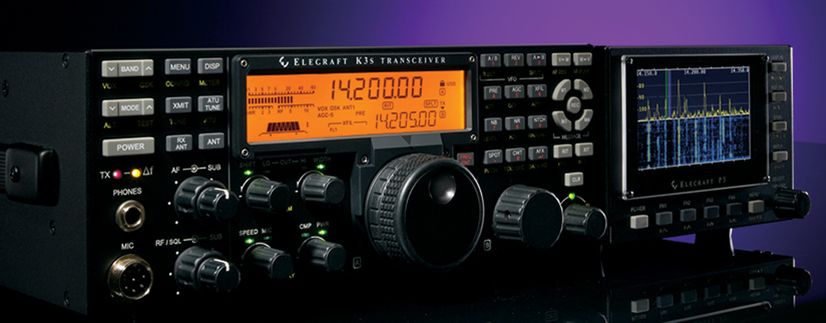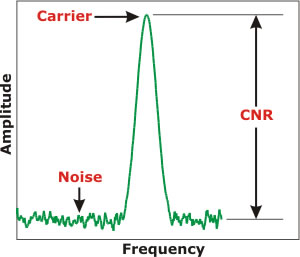W6SI Blog Page (Entry 7)
10/20/2015
New Receiver Architectures (Part 2)
Wow, it’s been a while I updated my blog here. Sorry, I’ve been taken over by something else, like making living, etc., etc… Excuse my laziness.
This is a follow-up installment of Entry 3, “New Receiver Architectures”. I should have worked on this right around time of Dayton, when Elecraft released the new K3S. That was a very curious development.
What is K3S, and what’s so great about it? It still pretty much look like good ol’ K3 does it not? Yes it does, but what they did, is pretty gutsy, and I’m impressed.

A disclaimer first. Although I am a passionate fan of Elecraft radios, I am not getting paid or get any special favor from them. This is my honest feel and understanding of the issue.
Two of the things they did, is pretty gutsy, in my opinion. (a) They re-layed out RF board to multi-layer PC board, to drop the noise floor for both TX and RX. Perhaps by a few dB. It costs great deal of time and resource to do such redesign, even though the circuit itself are not changed. And why would they do that to an already established high performance radio? I didn’t think anyone would do such thing. Amazing. They must be obsessed. (b) The new KSYN3A synthesizer. They call this “Ultra Low Phase Noise” synthesizer. So, an oscillator. What’s the big deal, you ask. This needs some explanation.
K3S, like K3, uses 49.380MHz thermally stabilized crystal oscillator output for a reference clock to drive Direct Digital Synthesis VFO. This is used to drive the mixer to convert the incoming signal to 8.215MHz 1st IF to drive the crystal filter. By nature of DDS, this output frequency wobbles somewhat (actually any clock oscillators do, whether it’s a crystal osc, or phase lock loop. Ironically, low-tech LC VFO suffers the least in terms of this). This is called phase noise. So what if it wobbles a little bit? Well, if you listen to HF bands, like 40 meter or 20 meter. Have you ever noticed that bands feel “noisier” when a big contest is on? You hear lots of signals so you may not have much cared, but the background noise seems more. And that can make it tougher to listen to those very weak signals. And you thought it was band condition, too many big signals, receiver sensitivity, etc., etc.
For the past year, ARRL, when they test HF rigs, use the obscure measurement called Reciprocal Mixing Dynamic Range. Quoting from the web site (http://www.arrl.org/forum/topics/view/177)
Reciprocal Mixing must be seriously considered while evaluating the overall performance of a receiver. In fact, it is probably the most significant figure in receiver performance! For this reason, at the earliest opportunity, ARRL will change the listing for reciprocal mixing to show "reciprocal mixing dynamic range" to ensure that less technically astute people realize that the reporting of reciprocal mixing is indeed part of a complete evaluation of receiver performance.
Reciprocal noise is generated in super-heterodyne receiver when phase noise from local oscillator mixes with strong adjacent signals, at the output of the mixer. This noise can seriously degrade the sensitivity of a receiver and is most notable when the interfering signal is just outside the IF passband.
Only way to prevent this noise is have a very pure local oscillator for mixing.

So these are two of the “enhancements”. Rather sobering, you say? Well, some people didn’t think so.
And as I was writing this, the new issue of QST (November 2015) came, and lo, there is a review article on this very KSYN3A Synthesizer! Just for an oscillator module. It’s that important.
ARRL measures this by injecting a strong signal 2KHz away from your receiving frequency, until the noise floor increase by 3dB. According to ARRL lab measurement, 2KHz RMDR improve by 22dB to 115db. That is amazing figure. ARRL considers 90dB to be “very good”. K3S, according to Sherwood Engineering measurement, is 107dB. Excellent.
If you remember (if not, go back to see my Entry 3 blog), I listed part of Sherwood Engineering Receiver performance ranking. There, you saw FlexRadio 6700 at the top, and ranked #3 is my ol’ KX3, not K3. K3 came in 5th. There is a reason for that, but later.
With above two enhancements, K3S jumped up to 2nd place with 107dB dynamic range at 2KHz spacing. A good 6dB improvement. For HF weak signal, 6dB is nothing to sneeze at.
|
|||||||||||||||||||||||||||||||||||||||||||||||||||||||||||||||||||||||||||||||||||
(Receiver Test Data, courtesy Sherwood Engineering, http://www.sherweng.com/table.html)
FlexRadio is another story. As I have mentioned in the last installment of the subject, that one is a “Direct Sampling” radio. It feeds the incoming signal (after low noise RF amp) directly to A to D converter. There is no room for reciprocal mixing to happen. Though there can be some jitter in sampling clock, they do not mix with adjacent strong signal to generate noise. So that’s still ranked at a top. But actually, that system, at least for now, has own limitation. It just doesn’t show in the way Sherwood Engineering is measuring things, which is designed with the traditional super hets in mind. So I am not rushing to the store to spend the money I don’t have. I’m not getting into that discussion this time around.
But I think it’s a very good thing that technologically significant innovations are being made by two rival US manufacturers. May there be a great future for Ham Radio.Above is a reflection of my thought and only mine. But if you have any questions, feedback and/or suggestions, please send me an e-mail. I might reply on this page (sorry, no guarantee)